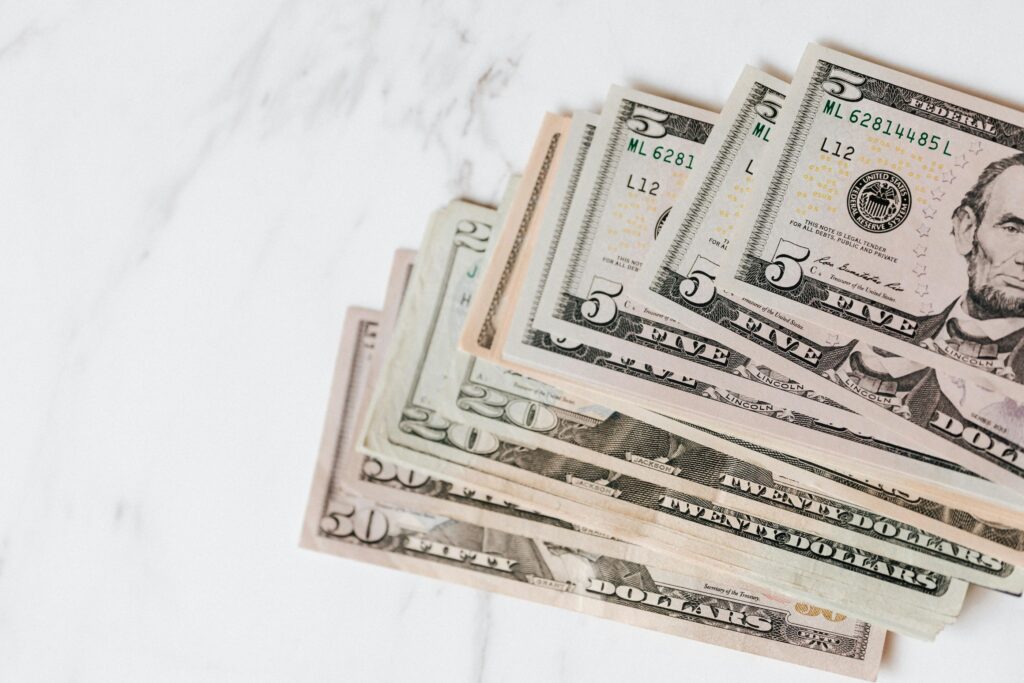Latest commodity news reveals gold prices plunged on Tuesday to the lowest in more than two weeks. It was dragged down by reduced fears of a flare-up in hostilities in the Middle East and profit-taking after recent gains.
The move highlighted the latest direction in commodities, with spot gold down 1.0% at $2,303.59 per ounce as of 1203 GMT, after hitting a six-week low the previous day.
Latest commodity news: Gold, oil & green energy
Gold, silver and palladium also hit three-week lows on Tuesday, while platinum hit a three-week low.
Writing about the latest commodity action, Ole Hansen, head of commodity strategy at Saxo Bank, said: ‘Much expected and desperately needed, gold’s Record-breaking rally from the mid-February low now undergoes a healthy and necessary correction.’
Latest commodity news: Gold prices
The metal was knocked down 2.7% on Monday, its biggest one-day drop in 22 months.
Its rally that ran from March to April took gold up nearly $400, hitting a peak of $2,431.29 on 12 April, setting a new record.
Hansen, however, was quick to add that this is a correction that measures the true level of underlying demand, beyond momentum or managed-money accounts, and could result in deleveraging the long side if the technical or fundamental picture changed course.
Latest commodity news: Still support for gold
Based on the latest trends in the commodity sector, the key support level in gold, as determined by Fibonacci retracement levels, is calculated at $2,255-2,260.
Latest commodity news: China buying Gold
Those corrections notwithstanding, two major drivers of gold demand – central bank buying and physical (bar and coin) demand in China, the world’s largest consumer – remain robust and supportive of the precious metal.
This trend was reinforced by the latest commodity price movements, with physically-backed gold exchange-traded funds recording their first net inflows in weekly terms since the end of 2023 in the latest week, according to the World Gold Council, with increased holdings in North America and Asia offsetting outflows in Europe.
Latest commodity news: Gold under pressure
With gold under pressure, spot silver also fell by 0.8% to $26.99 an ounce, and the gold-silver ratio widened.
Platinum and palladium also experienced declines, one at the hand of gold, and the other at the hand of electric vehicles.
Latest commodity news: 1 in 5 cars will be electric in 2024
Both precious metals are a key part of the latest commodity narrative, in which the automotive sector is set to be one of the biggest changes of the century.
The International Energy Agency says that more than one in five cars sold around the world in 2024 will be electric.
Latest commodity news: Oil price drop
Oil prices fell on Tuesday following a brief boost by positive economic data from Europe, as the market weighed the impact of potential new US sanctions on Iranian oil exports.
It was the latest twist in the topsy-turvy commodities market.
Brent crude, the global benchmark, was 51 cents, or 0.6%, lower at $86.49 a barrel by 1141 GMT, while US West Texas Intermediate crude futures were 56 cents, or 0.7 per cent, lower at $81.34.
Earlier, both indices had risen by $1 on reports that business activity in the eurozone had grown at its fastest pace in almost a year this month, as the services sector bounced back strongly, thanks to the latest commodity trends.

Latest commodity news: EU sanctions
EU foreign ministers on Monday provisionally agreed to widen sanctions against Iran in response to a missile and drone attack launched at Israel by Tehran.
The latest market trends suggest that the US Senate is going to vote on the aid package soon.
These sanctions will most severely affect ships, ports, refineries and overland export pipelines that process Iranian oil.
Latest commodity news: Middle East conflict
Evans also noted the added danger that a spiral of actions and counteractions on Iran’s part and Israel’s might drag the US into what will undoubtedly become a much wider conflict, seeing how politically compelling it is to prevent Iranian oil from reaching international waters.
Investors are headed into the week anticipating a raft of US economic data, including GDP numbers as well as March personal consumption expenditure, the US’s preferred metric for measuring inflation and, thus, a critical indicator for predicting the path of Fed monetary policy.
According to a preliminary Reuters poll, last week’s US crude oil stockpiles likely rose, while inventories of refined products likely fell, in line with the current commodity price trends.
Latest commodity news: NextEra Energy
NextEra Energy (NEE.N), the world’s biggest renewables company, announced a first-quarter profit that beat Wall Street estimates on Tuesday, building on its customer base in the regulated utilities business.
The main profit engine was its Florida Power & Light unit, which derives the bulk of its electricity from natural gas.
It benefited from a whopping 32.6% decline in the price of gas since the beginning of the year – another of the quirks of the most recent commodities crunch – which helped bring down the cost of fuels.
Latest commodity news: Green energy
At the same time, 100,000 more customers – 10% trends of the energy sector.
In spite of those wins, NextEra’s quarterly revenues fell just short of predictions – $5.73 billion compared with analysis estimates of $6.15 billion, according to figures from LSEG.
Lower retail sales at FPL contributed to this, as Easter arrived in late April this year, compared with mid-April in 2022, easing the winter chill.
Meanwhile, the utility’s clean energy unit, NextEra Energy Resources, said it more than doubled its new renewable and storage projects to a total of about 2,765 also announced a 32% drop in net income to $966 million, or 47 cents a share, compared with $1.44 billion, or 72 cents a share, over the same period a year earlier reflecting vanishing premiums that renewables once enjoyed on the commodities markets.
NextEra reported adjusted earnings per share of 91 cents for the quarter, versus the average estimate of 78 cents, according to data from LSEG.
The Juno Beach, Florida-based company also reiterated its 2024 adjusted earnings per share (EPS) target of $3.23 to $3.43.
Latest commodity news: Green energy boom
Furthermore, NextEra Energy Partners (NEP.N), the unit set up to buy and run contracted-income projects, said it was using proceeds from Kinder Morgan’s sale of STX Midstream to fund the buyout of NEP Renewables II, which were scheduled for June 2024 and 2025.
This unit reported core profit of $462 million – up from $447 million a year earlier – showing that management was on top of the latest commodity trends.
Latest commodity news: Russian commodities rising
That rosy revision, which the Economy Ministry raised to 2.8% on Tuesday (from 2.3% in June), was made when the rouble remained comparatively strong and the country’s current account surplus was expected to increase in the coming years.
Those assumptions no longer hold.
In 2023, the official estimate for the growth of Russia’s GDP is 3.1%. At the same time, the Economy Ministry admits that the driving force behind the country’s GDP growth has shifted towards investment.
According to official remarks, this shift is partially due to the latest commodity trends, including the war in Ukraine, which remains largely subsidised by state-allocated arms and ammunition production.
That, in turn, has obscured a deeper malaise that makes it harder to improve the Russians’ living standards.
Earlier this year, the International Monetary Fund revised its 2024 GDP growth forecast for Russia to 3.2% from 2.6%, thanks to government spending and investments tied to the war, as well as stronger-than-expected consumer spending in a restrictive labour market and high oil export revenues notwithstanding Western sanctions, in line with the latest commodity trends.

At a government meeting, the economy Minister Maxim Reshetnikov stated that consumer and investment demand are the main driving forces of growth in the next few years.
Latest commodity news: GDP stability
According to the ministry’s baseline forecast, GDP growth will stabilise at 2.3% in 2025-26. The rouble will also depreciate gradually, averaging at 101.2 to the dollar by 2026, compared with its current level of around 93.
Given these latest trends on commodities, Russian officials are preparing for a possible retreat in oil price slump, which projects the export price of Russian oil to stand at $65 a barrel until 2027, while Urals crude currently trades at around $79 per barrel.
Russia’s shrewd moves to avoid Western oil price caps and reroute its exports along new lines westwards and eastwards, as well as relying on shadow fleets to transport it, hedge strategic and economic fragilities, but have not fully insulated Russia from the sanctions regime. Reduced export revenues could widen the budget deficit.
Coping with these pressures, Russia’s trade and current account balances are expected to shrink. The trade balance is forecast to decline by more than 30% in the coming years, with the current account surplus forecast to shrink threefold to $25.3 billion by 2026.
Reshetnikov said that the big external risks – a global slowdown and sanctions pressure – were clearly outlined.
On the bright side, reflecting the latest trends in commodities, the ministry has revised up its projections for real disposable incomes and retail trade, forecasting a 5.2% growth in incomes this year, way up from the 2.7% it had expected.
Inflation is slated to finish the year at 5.1 above both its prior estimate and the central bank’s 4% target; interest rates are expected to remain in double digits at least until mid-2025; the ministry doesn’t see the labour shortage – and unemployment – ending soon, with the jobless rate continuing at 3% from 2024 to 2027.
Latest commodity news: Gazprom controversy
In late March, RusKhimAlyans, a subsidiary of Russia’s gas giant Gazprom, was ordered by the UK Supreme Court to drop its lawsuits against the Italian bank UniCredit in Russia over a gas project that was never completed.
It was a testament to the messy effects of the latest commodity trends on international business relations.
RusKhimAlyans had brought multitudes of lawsuits in Russian courts after the invasion of Ukraine by Russia in February 2022, which subsequently led to Western sanctions, put its liquefied natural gas (LNG) plant project at the Baltic port of Ust-Luga on hold.
RusKhimAlyans, of which Gazprom owns 50%, sued UniCredit for about 450 million euros ($480 million) in August 2023, only a few months after UniCredit had refused to pay out the bank guarantees it had issued for the contract because the company was reluctant to breach Western sanctions against Russia.
The issues at play in this dispute are symptomatic of the latest commodity trends, where the waves of geopolitical conflict can permeate the world’s financial and contractual landscape.
Matters took a twist when UniCredit obtained an anti-suit injunction from a London court which restrained RusKhimAlyans from pursuing its claims further before the Russian courts by enforcing the parties’ forum selection clause providing for arbitration of any disputes in France and not in Russia.
Last week, RusKhimAlyans’s attempt to overturn that injunction before the UK’s Supreme Court failed.
The move is part of a broader picture of Western financial institutions trying to embrace and hedge Russian litigation risk in line with the latest commodity trends underpinning global financial strategies.
Last week, reports suggested the European Central Bank is preparing to tell UniCredit to wind down its operations in Russia. European regulators are increasing their scrutiny of their financial dealings with Russian firms.
These proceedings, of which RusKhimAlyans’ action is one, highlight the problems facing the likes of Deutsche Bank and Commerzbank, which have managed to secure English court injunctions preventing certain litigation against them in Russia.
Moreover, Barclays has extended an interim injunction against the Russian lender Sovcombank, demonstrating how Western banks have increasingly turned to defensive litigation strategies worldwide to protect themselves from the latest commodity trends and regulation.
The broader implications of such jurisdictional battles underscore the importance of international legal regimes and sanctions in shaping corporate dynamics and strategies vis-à-vis global commodity trends, especially in the energy field.







